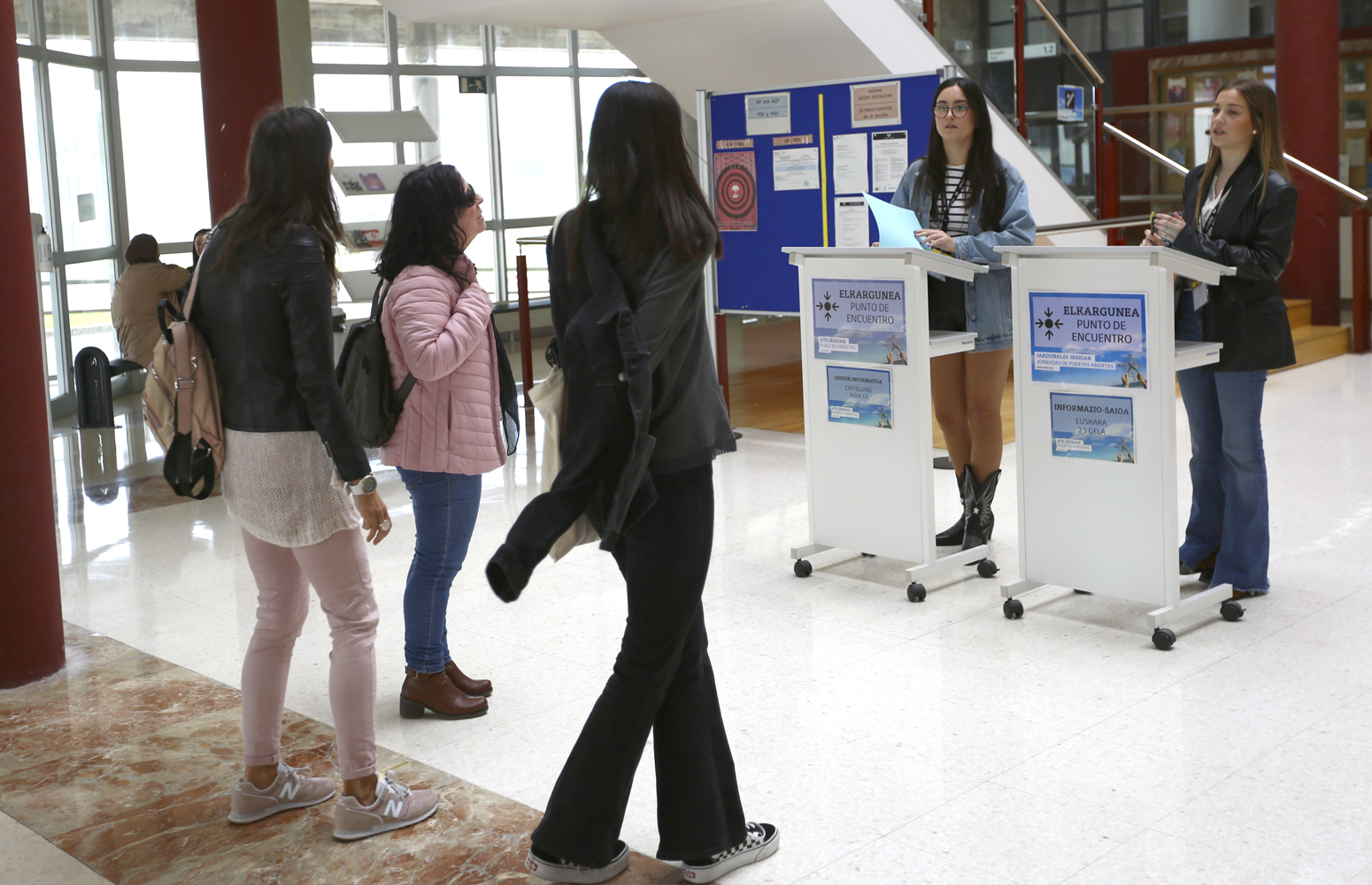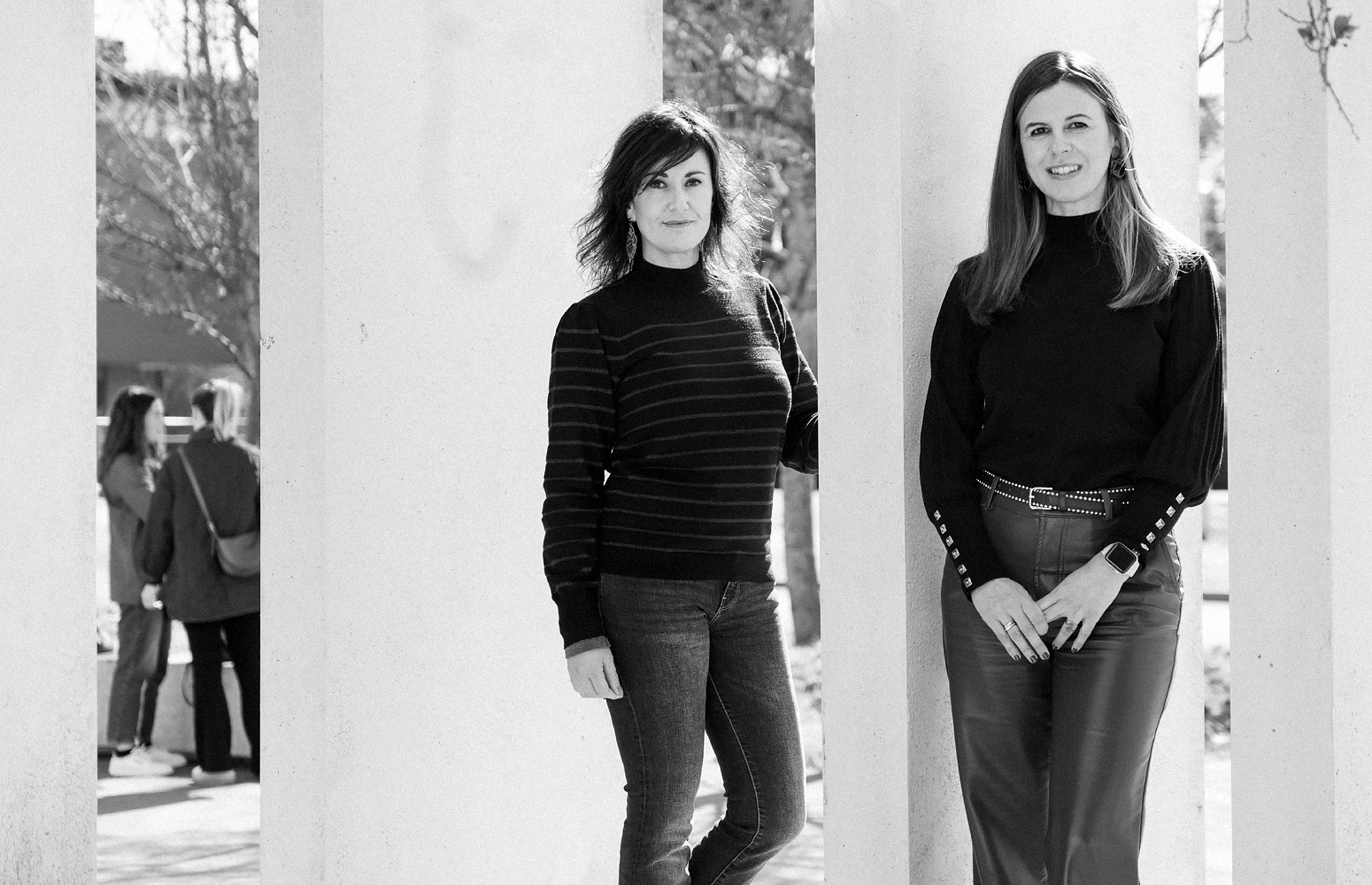El grupo de investigación Materiales + Tecnología de la Escuela de Ingeniería de Gipuzkoa de la UPV/EHU ha desarrollado unos hidrogeles con posibles aplicaciones biomédicas, en colaboración con la Universidad de Estrasburgo. Han utilizado almidón como materia prima, con el que han conseguido una estructura retícula tridimensional. Al añadir grafeno y extractos de salvia, han dotado al hidrogel de las propiedades eléctricas así como antibacterianas necesarias.
-

1.000 estudiantes se han reunido presencialmente con empresas que buscan talento joven
-

Jule Goikoetxea: «Si queremos nuevos sujetos, se debe incidir en las relaciones de poder que los crean»
-

Jornadas Puertas Abiertas
-

Ocho mujeres que cambiaron la farmacología
-

Nuevo equipo en la dirección de la Estación Marina de Plentzia PiE-UPV/EHU
Desarrollan un hidrogel de almidón y grafeno dirigido a electrodos de implantes cerebrales
En un trabajo de la UPV/EHU han creado hidrogeles con propiedades eléctricas y antibacterianas apropiadas para interfases neuronales
- Investigación
Fecha de primera publicación: 23/11/2018

Los hidrogeles son redes poliméricas físico-químicas capaces de retener grandes cantidades de líquido en condiciones acuosas, sin perder su estabilidad dimensional. Se utilizan en numerosas aplicaciones, y al incorporarles diferentes componentes, adquieren propiedades específicas, como la conductividad eléctrica. Esa ha sido la vía seguida por el grupo de investigación Materiales + Tecnología del Departamento de Ingeniería Química y del Medio Ambiente de la Escuela de Ingeniería de Gipuzkoa de la UPV/EHU, y para su hidrogel han elegido un biopolímero que no se había utilizado hasta la fecha para ese tipo de aplicaciones: el almidón. “Una de nuestras líneas de investigación se centra en el almidón, y consideramos que tiene propiedades biológicas y físico-químicas apropiadas para crear hidrogeles”, comenta Kizkitza Gonzalez Munduate, miembro del citado grupo.
En la creación del hidrogel tuvieron en mente su utilización en interfases neuronales, es decir, los componentes encargados de la conexión eléctrica en los implantes que interactúan con el sistema nervioso. “Los electrodos tradicionales de las interfases neuronales, de platino u oro, por ejemplo, al ser rígidos, requieren de revestimientos poliméricos conductores para acercar su flexibilidad a la de los tejidos neuronales. Actualmente, sin embargo, se demandan dispositivos más pequeños, así como que cuenten con mejores propiedades mecánicas, eléctricas y biológicas”, explica la investigadora.
Los hidrogeles desarrollados “responden muy bien a esas demandas”, aclara Gonzalez. Para dotar al hidrogel de conductividad eléctrica, han recurrido al grafeno, “un material de gran interés. Proporciona unas propiedades eléctricas muy adecuadas al hidrogel, pero también presenta un inconveniente: no se estabiliza muy fácilmente en agua. Para superar ese obstáculo, y hacer al grafeno estable en un medio acuoso, utilizamos extractos de salvia. Estos extractos, además, hacen al hidrogel aún más adecuado, si cabe, para ser utilizado en medicina, ya que también tienen propiedades antimicrobianas y antiinflamatorias”, añade.
Otra de las características distintivas de esta investigación ha sido la utilización de la denominada química click para la elaboración del hidrogel. “Es una estrategia que en los últimos años está acaparando la atención de la comunidad científica, porque a diferencia de otras vías de síntesis, la química click generalmente no utiliza catalizadores en las reacciones; además no se generan subproductos, y son reacciones de gran rendimiento”, detalla la investigadora Gonzalez.
Aunque ha sido diseñado para una aplicación muy específica, la investigadora reconoce que este producto de bioingeniería debe recorrer un largo camino hasta llegar a ser utilizado con pacientes: “Ha sido una investigación de nivel inicial, centrada en la parte de la ingeniería, relacionada con el material. A partir de ahora, se deberían ir superando niveles paulatinamente y diseñando los correspondientes ensayos”.
Información complementaria
La ingeniera química industrial Kizkitza Gonzalez Munduate es miembro del grupo de investigación Materiales + Tecnología del Departamento de Ingeniería Química y del Medio Ambiente de la Escuela de Ingeniería de Gipuzkoa de la UPV/EHU. Actualmente se encuentra llevando a cabo su tesis doctoral bajo la dirección de las doctoras Nagore Gabilondo y Arantxa Eceiza. En una estancia que realizó en la Universidad de Estrasburgo fue cuando surgió la oportunidad de colaboración entre las dos universidades, concretamente, con el grupo de investigación BioTeam de la universidad francesa, bajo la dirección del doctor Luc Avérous.
Referencia bibliográfica
- Starch/graphene hydrogels via click chemistry with relevant electrical and antibacterial properties
- Carbohydrate Polymers (2018)
- DOI: 10.1016/j.carbpol.2018.09.007




